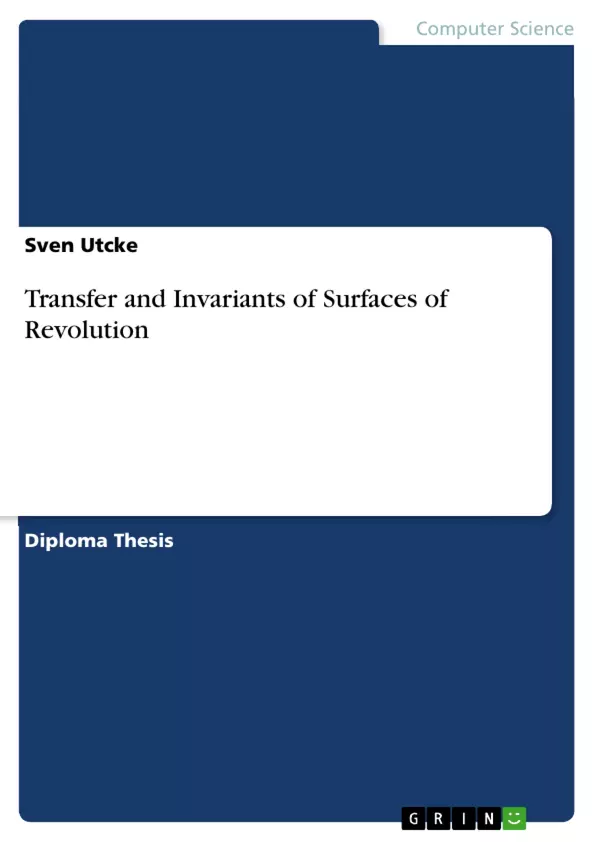A number of papers in the Computer Vision and Pattern Recognition
literature have demonstrated that invariants, or equivalently
structure modulo a 3D linear transformation, are sufficient for object
recognition. The final stage in the recognition process is
verification, where an outline is transferred from an acquisition
image of the object to the target image.
For the most part recognition based on invariants has concentrated on
planar objects, though some 3D invariants have been measured from
single and multiple images for polyhedra, point sets, surfaces of
revolution and algebraic surfaces. The work so far on surfaces of
revolution has only exploited isolated points on the outline (such as
bitangents), and has not addressed transfer or verification.
This thesis, for the first time, extends the transfer and extraction
of invariants to surfaces of revolution using the entire outline.
Given a single view of the surface, it is possible to obtain the
projection in any other given view, given a minimal number of points
in the target image. In particular it is is possible to reconstruct
the generating curve, and thereby a rich set of invariants.
Inhaltsverzeichnis (Table of Contents)
- Introduction
- The Object Class of Interest
- The Task
- The Chosen Imaging Geometry
- Contributions of this Thesis
- Outline of this Thesis
- Distinguished features
- Tangents
- The Tangent Cone
- The Outline
- The Affine Basis
- The Weak Perspective Camera
- The underlying Geometry.
- The Surface of Revolution
- The Weak Perspective Camera
- Recovering the Generating Function
Zielsetzung und Themenschwerpunkte (Objectives and Key Themes)
This project aims to extend the transfer and extraction of invariants to surfaces of revolution using the entire outline. The goals include:- Transfer: Given a single or multiple views of the surface, obtain the projection in any other given view. For example, after specifying a minimal number of points in the target image, render the object from that viewpoint.
- Invariants: Extract from the outline in a single view a signature or set of invariants which are viewpoint independent. These should also be derived directly from the generating curve.
- Investigate the use of the affine approximation to projection and perspective projection.
- Develop methods that work reliably and robustly on images of real objects.
- Utilize symbolic algebra software like Mathematica for theoretical analysis.
Zusammenfassung der Kapitel (Chapter Summaries)
- Introduction: This chapter introduces the object class of interest, surfaces of revolution, and the task of extracting invariants and transferring them to different viewpoints. The chosen imaging geometry is discussed, along with the contributions of this thesis and an outline of its structure.
- Distinguished features: This chapter delves into the distinguished features of surfaces of revolution, specifically tangents and the tangent cone. The chapter explores how the outline of the surface is related to the tangent cone and introduces the concept of the affine basis.
- The Weak Perspective Camera: This chapter focuses on the underlying geometry of the weak perspective camera, including the surface of revolution and the camera itself. The chapter explores the process of recovering the generating function of the surface from the captured image.
Schlüsselwörter (Keywords)
This project focuses on the transfer and extraction of invariants for surfaces of revolution. The work utilizes techniques from Computer Vision and Pattern Recognition, and explores the use of affine and perspective projections. The project also relies on concepts from projective and differential geometry and employs symbolic algebra for analysis. Key themes include object recognition, invariants, surface reconstruction, and image analysis.- Citar trabajo
- Sven Utcke (Autor), 1993, Transfer and Invariants of Surfaces of Revolution, Múnich, GRIN Verlag, https://www.grin.com/document/185569



